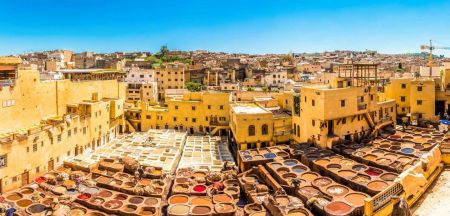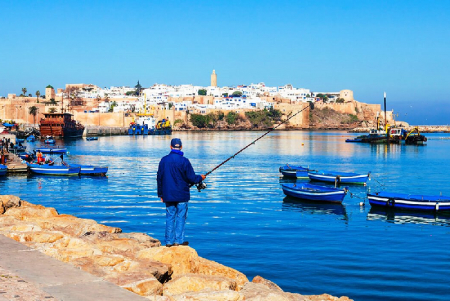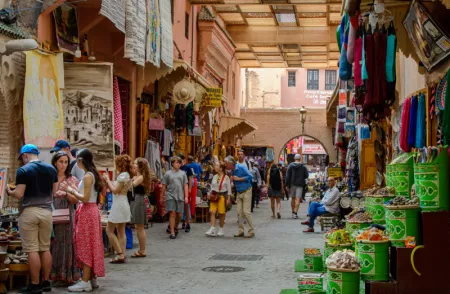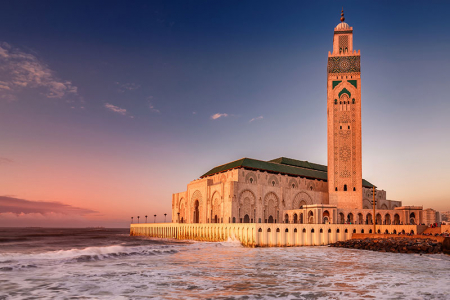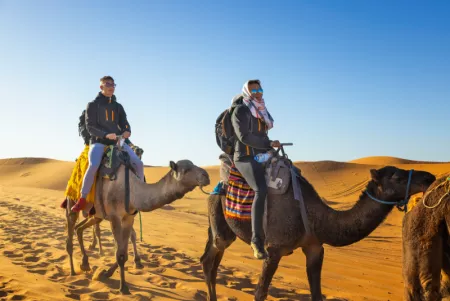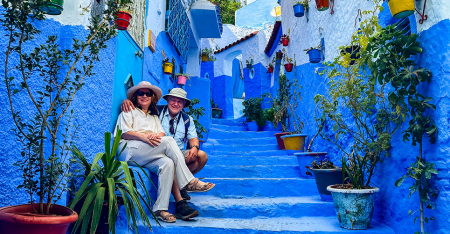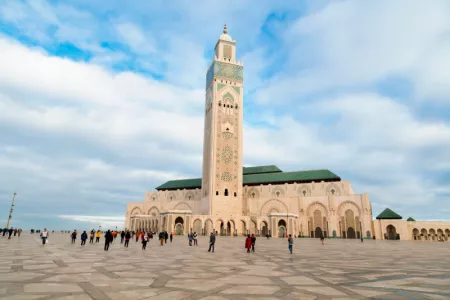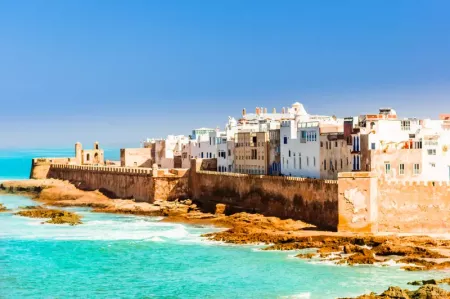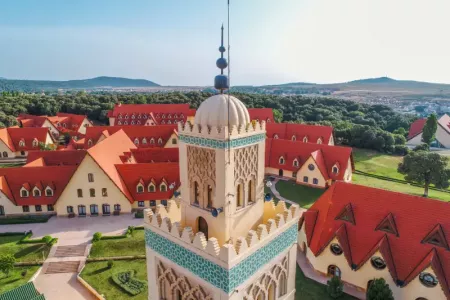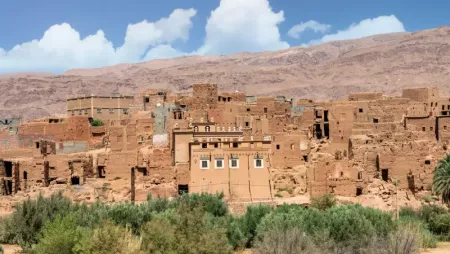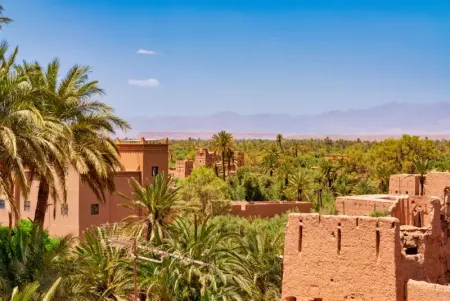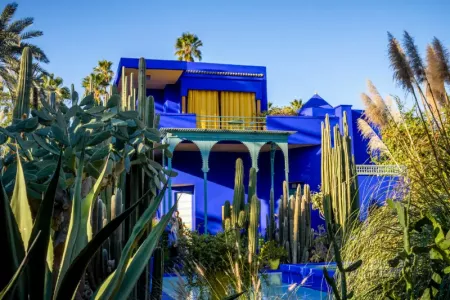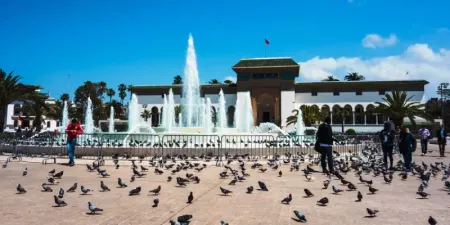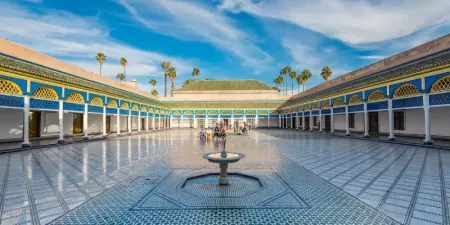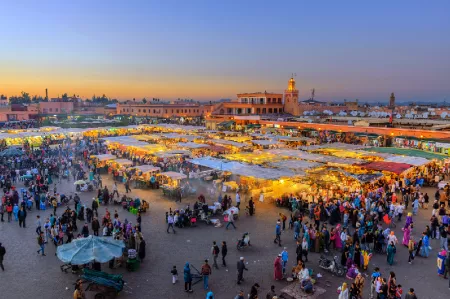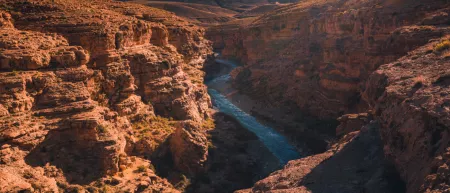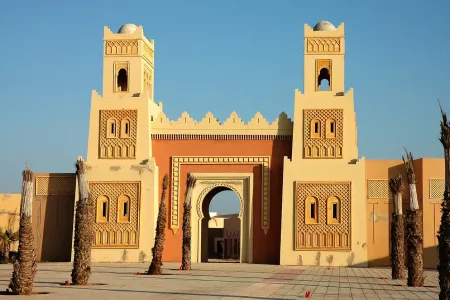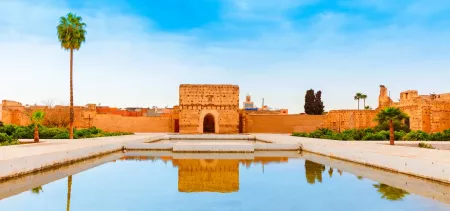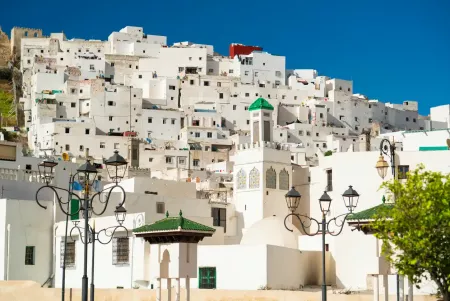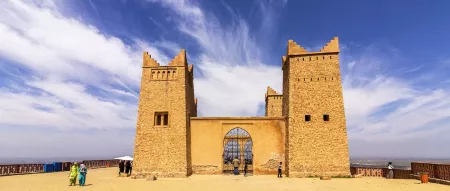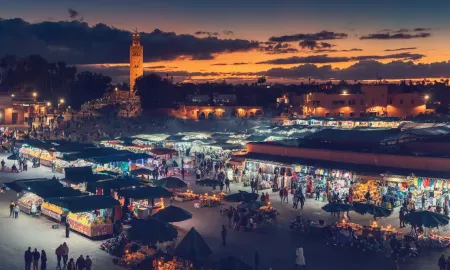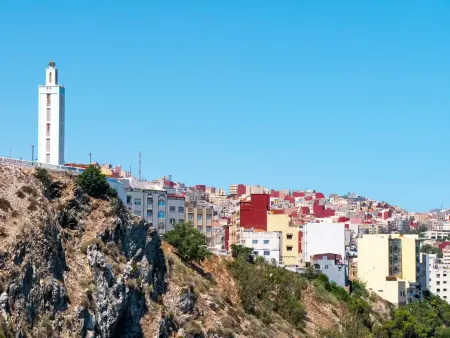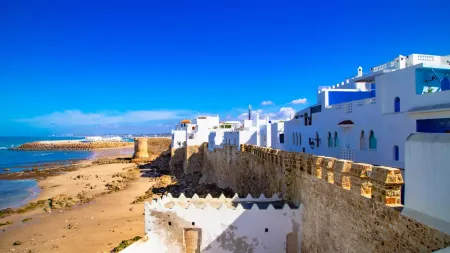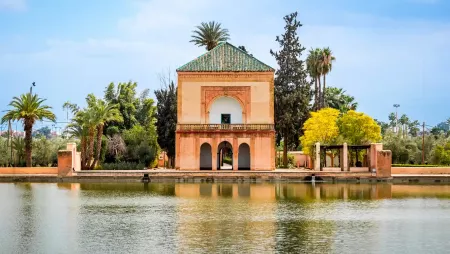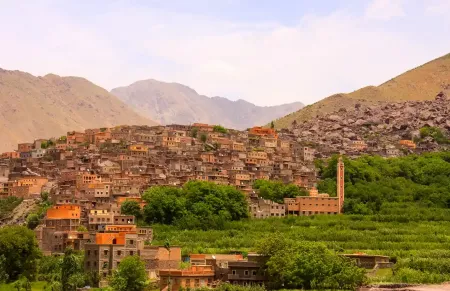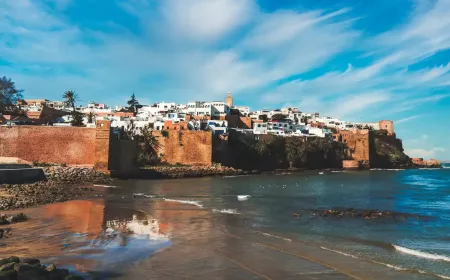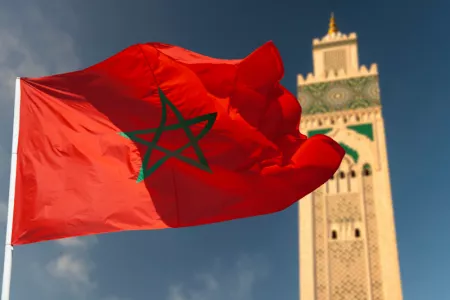Ait Benhaddou Travel Guide: Best Times to Visit This UNESCO Wonder
Step into the timeless charm of Ait Benhaddou Morocco, a UNESCO World Heritage Site where ancient clay walls, kasbah towers, and desert landscapes tell the story of centuries past. This guide explores the cultural significance of Ksar Ait Benhaddou, its role along historic caravan routes, the best seasons to visit, and the breathtaking views that make it one of Morocco’s most captivating destinations.

Morocco's southern reaches harbor a remarkable testament to centuries of human ingenuity—Ait Benhaddou, where earthen walls rise from desert landscapes like pages from an ancient manuscript. This extraordinary ksar has captured the imagination of 2,872 Tripadvisor reviewers, who awarded it an impressive 4.6 out of 5 stars. Hollywood directors have long recognized its cinematic magic, selecting these timeless structures as backdrops for epic tales like Gladiator and Game of Thrones.
Thirty kilometers west of Ouarzazate, this architectural jewel earned UNESCO World Heritage recognition in 1987—a distinction that celebrates its exceptional preservation as Morocco's finest example of earthen clay construction. The fortified village traces its defensive origins to the 11th-century Almoravid period, yet today, merely five families call the historic heart of this ancient settlement home. Geography played a decisive role in shaping Ait Benhaddou's destiny, positioned strategically along the vital caravan route linking the Sahara with Marrakesh. Merchants and travelers depended on this passage through the Atlas Mountains via the Tizi n'Tichka pass, transforming the ksar into a crucial waystation for desert commerce.
This detailed exploration will guide you through every facet of Ait Benhaddou's wonders—revealing optimal visiting seasons, hidden architectural treasures, and the cultural significance that demands far more attention than the hurried twenty-minute stops many tours provide. Prepare to discover why this ancient fortress deserves a place among Morocco's most extraordinary destinations.
Understanding Ait Benhaddou's UNESCO Status
UNESCO's 1987 recognition of Ait Benhaddou extended far beyond symbolic acknowledgment. The designation emerged from rigorous evaluation against exacting standards that challenge historical sites across the globe.
What makes it a UNESCO World Heritage Site
Exceptional preservation of pre-Saharan construction techniques earned Ait Benhaddou its coveted UNESCO status. The ksar represents southern Morocco's earthen architecture at its most authentic, a living museum where traditional building methods remain virtually unchanged across centuries. The site's remarkable quality lies in its architectural integrity, where packed earth, clay, and wood create structures that seem to emerge organically from the desert floor.
These materials forge a visual dialogue with the surrounding landscape, demonstrating how skilled craftsmen once harmonized human habitation with natural environments. The construction techniques displayed here have influenced architectural traditions throughout North Africa's arid regions.
Cultural and architectural significance
Ait Benhaddou functions as a historical crossroads where Berber and Arab architectural traditions converged and flourished. The buildings reveal this cultural fusion through intricate decorative patterns and construction methodologies that speak to centuries of cross-cultural exchange along ancient trade routes.
Architectural elements follow time-tested defensive principles:
- Exterior walls without windows, designed for protection against desert raids
- Interior courtyards serve as the heart of family life and community gathering
- Ornamental details that merge practical function with aesthetic beauty
This fragile cultural landscape has withstood modernization pressures that have altered countless other Moroccan heritage sites, making its survival particularly significant for understanding traditional North African urban planning.
The meaning of 'ksar' and its historical role
The term "ksar," pluralized as "ksour," describes fortified villages characteristic of Maghreb architecture. These settlements represented sophisticated responses to the challenges of desert life, combining defensive capabilities with community organization.
Ait Benhaddou fulfilled several essential functions within the regional economy. Extended families and their livestock found secure shelter within its protective walls. Desert travelers carrying precious cargo received safe passage through the treacherous Atlas Mountain corridors. The ksar operated as a vital trading center where caravan merchants exchanged goods before continuing their journeys.
Strategic positioning made Ait Benhaddou indispensable to trans-Saharan commerce. The settlement controlled a critical mountain passage, becoming an obligatory stop for merchants transporting salt, gold, and other valuable commodities between desert regions and Morocco's northern territories.
Ready to experience the magic of Ait Benhaddou? Explore our carefully crafted Morocco tour packages and uncover the history, culture, and desert beauty that make this UNESCO wonder unforgettable.
Yes, you’ll find Ait Ben Haddou absolutely worth visiting for its ancient ksar, impressive earthen architecture, and stunning desert scenery.
When you visit, you’ll recognize Ait Ben Haddou from famous films and shows like Gladiator, Game of Thrones, Lawrence of Arabia, and The Mummy.
Best Times to Visit Ait Benhaddou
Seasonal rhythms at this ancient ksar create dramatically different experiences for visitors. Weather conditions, natural lighting, and visitor patterns shift throughout the year, each offering distinct advantages for exploring these millennia-old structures.
Spring (March to May): Ideal weather and fewer crowds
Desert landscapes burst into unexpected life during spring months, as verdant growth creates stunning visual contrasts against the red earthen walls. Temperature readings hover between comfortable 19°C to 27°C (67-81°F), allowing extended exploration without the physical drain that accompanies summer's intensity. Daylight extends generously to 10-11 hours, providing photographers with ample opportunities to capture the ksar's architectural details.
Summer (June to August): Hot but photogenic
Desert heat reaches a formidable 35°C (95°F) during peak summer, transforming midday visits into endurance challenges. Yet this season rewards visitors with Morocco's most reliable sunshine. July delivers an impressive 12 hours of daily illumination. Heat-conscious travelers should concentrate their ksar exploration during dawn or dusk hours, when temperatures become manageable for navigating the steep stone pathways.
Autumn (September to November): Balanced climate
September through November present ideal middle-ground conditions as temperatures gradually descend from 29°C to 19°C (84-65°F). October stands out particularly, offering pleasant 14-24°C ranges that combine warm afternoons with refreshingly cool evenings. Autumn's landscape maintains good photographic contrast with the ancient architecture, though weather patterns prove slightly less predictable than spring.
Winter (December to February): Quiet and cool
Cold season brings mild 15-18°C daytime temperatures (59-64°F) alongside significantly reduced tourist numbers, creating intimate encounters with the historic site. Nighttime conditions drop substantially to 3-5°C (37-41°F), requiring appropriate winter clothing preparation. Despite common misconceptions, winter months still provide substantial sunshine—approximately 8 hours daily.
Time of day: Sunrise vs. Sunset
Photography enthusiasts witness Aït Benhaddou's most spectacular moments during golden hour transitions. Dawn and dusk illuminate the red clay structures with ethereal glowing effects, while the blue hour period immediately following sunset bathes the entire complex in magical atmospheric lighting as interior illumination begins. Overnight accommodation enables visitors to experience both extraordinary lighting phenomena without competing crowds.
Weekday vs. weekend visits
Weekday exploration provides markedly more peaceful experiences compared to weekend periods when domestic tourism reaches peak levels. Early morning or late afternoon weekday visits deliver the optimal combination of superior lighting conditions and minimal crowd interference.
“Ait Ben Haddou” means “the family of Ben Haddou,” referring to the tribe that originally settled the ksar.
Yes, you’ll find Ait Benhaddou safe for tourists, with friendly locals and a peaceful atmosphere.
What to See and Do Inside Ait Benhaddou
Ancient gates welcome visitors into the ksar Ait Benhaddou, where centuries collapse into moments and earthen corridors reveal secrets of desert civilizations. Each narrow passageway and weathered structure presents distinct discoveries for the curious explorer.
Climbing to the agadir (fortified granary)
The ascent to Ait Benhaddou's summit unveils the ancient agadir (fortified granary), where communities once safeguarded their grain stores against uncertain times. Though partially weathered by centuries of desert winds, this elevated fortress delivers extraordinary panoramic vistas across surrounding desert expanses and the majestic Atlas Mountains. The climb demands effort, particularly during warmer periods, yet these sweeping views justify every challenging step.
Exploring the kasbah towers and alleyways
Narrow passages wind between towering kasbahs, each displaying intricate designs that celebrate exceptional Berber architectural mastery. Geometric patterns adorning the upper reaches of these structures emerge through precise clay brick arrangements, testimony to the sophisticated artistry of traditional craftsmen. The entire settlement creates an interconnected maze of pathways linking terraced residences with communal gathering spaces.
Visiting the mosque and caravanserai
Several original structures maintain their historical purpose within Ait Benhaddou, Morocco. The centuries-old mosque and Koranic school stand preserved alongside the "collective arena" where current residents convene for family ceremonies and religious observances. The ksar houses a traditional caravanserai, the desert inn that once provided essential rest for weary travelers navigating caravan routes.
Photography spots and panoramic views
Photography enthusiasts discover exceptional opportunities throughout the Ait Benhaddou UNESCO World Heritage Site:
- The elevated Agadir captures dramatic sunrise and sunset panoramas
- Kasbah towers frame architectural details against desert backdrops
- Palm groves at the settlement's base offer verdant contrasts
Local artisan shops and Berber crafts
Skilled artisans throughout the ksar present authentic Moroccan handicrafts, featuring:
- Hand-woven Berber rugs displaying traditional geometric designs
- Silver jewelry enhanced with amber and coral elements
- Pottery and distinctive Amazigh-crafted items
Every rug represents individual dedication; single artisans invest days to months creating each piece. These genuine works preserve and celebrate the enduring cultural traditions of the region's Berber communities.
You’ll learn that Morocco’s ancient name was Mauretania or Al-Maghrib, depending on the historical period.
You’ll notice Moroccans are ethnically diverse, mainly a mix of Amazigh (Berber) and Arab, with some Sub-Saharan and Mediterranean influences.
Customize Your Dream Vacation!
Get in touch with our local experts for an unforgettable journey.
Plan Your Trip
Planning Your Trip to Ait Benhaddou
Reaching the ancient kasbah of Ait Benhaddou demands thoughtful preparation, yet rewards every traveler who ventures to this magnificent UNESCO World Heritage Site. Expert guidance can transform your visit from a rushed tourist stop into an unforgettable exploration of Morocco's most captivating fortress.
How to get there from Marrakech or Ouarzazate
Multiple routes connect you to this desert jewel from Marrakech. The most direct path involves driving yourself along the N9 road, a scenic three-hour journey. Public transport enthusiasts can board CTM or Supratours buses bound for Ouarzazate, though this option requires 4-5 hours. Those seeking comfort without driving responsibilities often hire private drivers for approximately USD 100.
Ouarzazate serves as the nearest major town, positioned just 30 kilometers from our destination. This short 39-minute drive makes day trips entirely feasible. Grand taxis operating from Ouarzazate typically charge 200 dirhams for round-trip service, including waiting time.
Where to stay: inside vs. outside the ksar
Adventurous travelers can experience authentic ksar living at Kasbah El Hajja among the rare accommodations actually situated within the ancient settlement. Electricity remains minimal after dark, creating an atmospheric experience reminiscent of centuries past.
Modern comfort seekers will find excellent options beyond the fortress walls, including the well-regarded Riad Ouinz and La Baraka Auberge. Most lodging establishments occupy the main road directly facing the historic village, offering stunning views.
Tips for guided vs. self-guided tours
Local guides excel at revealing historical layers and secrets hidden within the maze-like passages. Experienced guides such as Mohammed and Yusef earn consistent praise for their extensive knowledge and photography expertise.
Independent exploration grants freedom to witness sunrise or sunset without tour group constraints. Important note: the entrance remains completely free, despite occasional individuals claiming otherwise.
What to pack and wear
Essential items for your ksar adventure:
- Sturdy hiking footwear for uneven terrain
- Sun protection arsenal (hat, sunglasses, SPF 30+ sunscreen)
- Water bottle for desert climate hydration
- Cash for authentic souvenir purchases
- Light, modest clothing respecting local customs
Avoiding common tourist scams
Remain alert for these frequent situations:
- Self-appointed "guides" offering uninvited assistance
- Individuals demanding entrance fees (remember: access is free)
- Vendors quoting excessive prices for handicrafts
Polite but firm "no thank you" responses effectively handle most unwanted approaches.
Conclusion
Within these ancient earthen walls lies something extraordinary—a living museum where history whispers through every cracked clay surface and weathered archway. Ait Benhaddou reveals itself as far more than Morocco's architectural jewel; it stands as a gateway to understanding how civilizations once flourished along desert trade corridors.
Each season unveils distinct facets of this UNESCO wonder, yet spring's temperate embrace provides the most favorable conditions for deep exploration. The golden hours of dawn and dusk transform these structures into something almost ethereal, when tour groups have departed and silence settles over the ksar. True appreciation demands patience—time to absorb the intricate details that casual visitors often miss.
The ascent to the hilltop of Agadir challenges visitors physically, yet rewards them with perspectives that span centuries of human achievement. These winding pathways between ancient dwellings reveal construction techniques passed down through generations of Berber craftspeople. Traditional artisans continue their ancestral practices within these walls, offering tangible connections to Morocco's cultural heritage.
Thoughtful preparation elevates any visit to this remarkable site. Whether experiencing authentic overnight stays within the ksar's atmospheric chambers or selecting comfortable nearby lodgings, the profound impact remains constant. Such destinations transcend typical tourist attractions; they forge lasting connections between past and present.
The evening light casts amber shadows across these timeless facades, illuminating precisely why UNESCO recognition was inevitable. Ait Benhaddou offers something increasingly rare in our modern world: genuine encounters with living history. These memories crystallize into treasured recollections that continue inspiring long after departure, a testament to the enduring power of places where human creativity has triumphed over time itself.
FAQs
Q1. Is Ait Benhaddou worth visiting?
Absolutely! Ait Benhaddou is a UNESCO World Heritage Site that offers a unique glimpse into Morocco's rich history and architecture. Its well-preserved earthen clay structures, stunning views, and cultural significance make it a must-visit destination for travelers interested in experiencing authentic Moroccan heritage.
Q2. What's the best way to get to Ait Benhaddou?
The most convenient way to reach Ait Benhaddou is by car from Marrakech, which takes about 3 hours. Alternatively, you can take a bus to Ouarzazate and then a grand taxi to Ait Benhaddou. For a more flexible experience, consider hiring a private driver or joining a guided tour.
Q3. When is the ideal time to visit Ait Benhaddou?
Spring (March to May) is generally considered the best time to visit, offering comfortable temperatures and fewer crowds. However, each season has its charm. For the best experience, plan your visit during early morning or late afternoon to enjoy optimal lighting and cooler temperatures, especially if traveling in summer.
Q4. Are there accommodation options within Ait Benhaddou?
Yes, there are limited accommodation options within the ancient ksar itself, such as Kasbah El Hajja. These offer a unique, immersive experience but with minimal modern amenities. Alternatively, there are numerous comfortable options just outside the ksar along the main road facing the village.
Q5. What should I wear when visiting Ait Benhaddou?
It's recommended to wear comfortable, sturdy shoes for walking on uneven terrain and climbing stairs. Light, modest clothing is appropriate, and don't forget sun protection such as a hat, sunglasses, and sunscreen. Also, bring a water bottle to stay hydrated, especially during warmer months.

